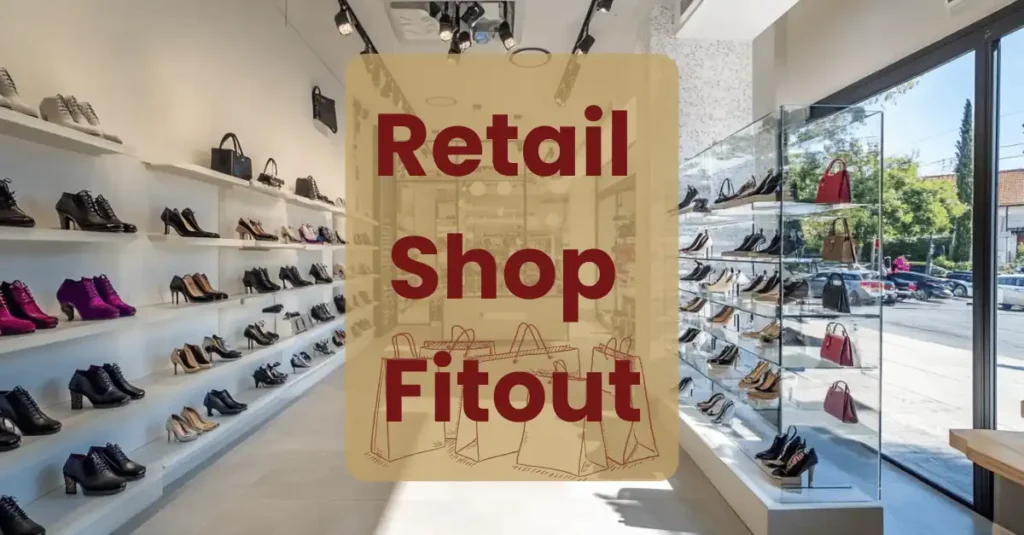When you’re planning a retail shop fitout in Dubai, every detail counts—from the first sketch to the final display. A well-executed fitout not only showcases your products, it also guides customer flow, reinforces your brand story, and boosts sales. In this friendly guide, we’ll walk through eight essential steps—packed with practical advice, cost tips, and real-world examples—to help you create a standout retail environment that customers love.
Step 1 – Clarify Your Retail Shop Fitout Vision
Align Design with Your Brand
Begin your retail shop fitout by defining the experience you want customers to have.
Luxury Boutique: Soft lighting, velvet seating, marble counters
Urban Streetwear: Industrial finishes, graffiti-style art, open racks
Eco-Friendly Market: Natural wood, green walls, sustainable materials
Create a mood board on Pinterest or Canva, collecting images of color palettes, materials, and display ideas. This visual roadmap ensures everyone—from your designer to your carpenter—stays on the same page.
Step 2 – Plan a Customer-Centric Layout
Optimize Traffic Flow
A fruitful retail shop fitout guides shoppers intuitively:
Entrance Zone: Immediate wow factor—feature new arrivals or signature items.
Main Aisles: Keep paths at least 1.2 m wide for comfort and ADA accessibility.
Eye-Level Displays: Products placed between 1.2 m–1.6 m see up to 20% higher sales.
Checkout Area: Position near exit but avoid bottlenecks—include impulse add-ons.
Use 3D floor-plan software or work with your fitout team to map out entry points, display zones, and service counters before construction.
Step 3 – Select Durable, On-Brand Materials
Balance Style and Function
Your material choices affect both aesthetics and maintenance:
Flooring: SPC vinyl for moisture resistance, porcelain tiles for elegance, or polished concrete for an industrial look.
Walls & Partitions: Magnetic chalk panels for interactive displays, mashrabiya screens for ambient light filtering, or acoustic panels disguised as art to control noise.
Countertops & Joinery: Quartz countertops withstand heavy use; powder-coated steel shelving offers a modern edge.
Always request samples and test finishes under your store’s lighting to ensure they read as intended.
Step 4 – Layer Lighting for Impact
Combine Ambient, Task & Accent
A stellar retail shop fitout uses three lighting layers:
Ambient: Overall brightness via recessed or track lights.
Task: Focused fixtures at checkouts, fitting rooms, and product tables.
Accent: Spotlights on feature walls or new-in displays—creates drama and depth.
Pro tip: Use adjustable LED spotlights (3000–3500K) to mimic daylight and show true product colors.
Step 5 – Integrate Smart Display Solutions
Flexible & Modular Fixtures
Display units should adapt to seasonal campaigns and new product lines:
Modular Slat Walls: Easily add hooks, shelves, or signage.
Mobile Islands: On wheels for quick reconfiguration.
Built-In Cases: Lockable glass cabinets for high-value items.
Digital Signage: Touchscreens for product info or interactive lookbooks.
This flexibility reduces long-term costs and keeps your shop feeling fresh.
Step 6 – Elevate Comfort in Fitting & Seating Areas
Encourage Longer Dwell Time
If you sell apparel, accessories, or lifestyle products, a comfortable fitting zone matters:
Mirrors & Lighting: Full-length mirrors with soft side lighting for flattering views.
Seating: Plush ottomans or built-in benches in waiting zones.
Refresh Points: Mini beverage bar or phone-charging station—little perks go a long way.
Even customers who don’t try on items appreciate a thoughtfully designed rest area.
Step 7 – Future-Proof with Technology
Seamless Omni-Channel Integration
A modern retail shop fitout leverages tech to enhance service:
POS Tablets: Mobile checkout to reduce lines.
RFID Tagging: Instant inventory updates and quick reordering.
QR Codes: Scan for product details or online reviews.
App-Connected Loyalty: Encourage repeat visits with digital points and incentives.
Integrate wiring and sensors during construction to avoid retrofits later.
Step 8 – Partner with a Trusted Fit out Specialist
Why Expertise Matters
Working with a Dubai-based fit out team like Deco Wood Renovation ensures you:
Navigate DEWA, civil defense, and municipality permits smoothly.
Access vetted local suppliers for materials and furnishings.
Stick to realistic timelines—typically 4–8 weeks for a 100 sqm shop.
Benefit from end-to-end project management: design, MEP works, joinery, installation, and snagging.
A professional fitout partner transforms your vision into a practical, on-brand retail experience.
FAQs on Retail Shop Fitout Dubai
Q1: How much does a retail shop fitout cost in Dubai?
A: Expect AED 1,000–2,500 per sqm for a mid-range fitout. Luxury finishes or complex layouts can push costs higher.
Q2: How long does a typical fitout take?
A: Small boutiques (~50 sqm) can finish in 4–6 weeks; larger stores (150 sqm+) may need 8–12 weeks.
Q3: Can I stay open during renovations?
A: Phased work might allow partial operation, but a full overhaul usually requires temporary closure.
A successful retail shop fitout in Dubai is part art, part strategy, and a whole lot of planning. By following these eight steps—from clarifying your vision to choosing the right fit out partner—you’ll craft a shopping experience that delights customers, reinforces your brand, and delivers strong returns. Ready to bring your retail space to life? Contact Deco Wood Renovation for a free consultation and let’s make your store the next Dubai hotspot.

